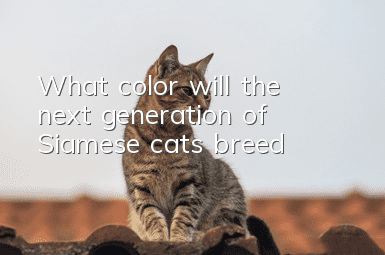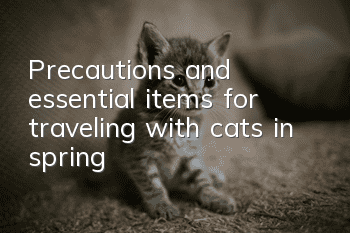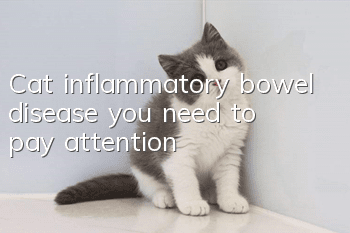What color will the next generation of Siamese cats breed?

For those who breed, the quality of cat breeding is a matter of great concern. Siamese cats are no exception. Of course, special circumstances are not excluded. However, the following rules are what will happen under normal circumstances. Dear breeders, You can refer to it!
Siamese Cat
When talking about coat color group - it refers to (blue, black, cream, red, etc.) When talking about pattern group - it refers to (tabby, firework, shade, etc.) If both of them work, then the following general rule is Merge coat colors/patterns.
1. All male kittens will receive two coat color genes from the female cat, and the children of the male cat will all receive the female cat's coat color (if it is a parti-colored female cat, one of the coat colors) or lighten the male cat's coat color - -Please read the explanations of General Rules 21 and 24 again.
2. A female cat’s kittens receive one coat color gene from each parent cat, and the female cat’s offspring will mix or dilute the parent cat’s coat colors – please see General Rules 21 and 24 again.
3. To get a cream or red (coat color/color) kitten female cat, the male cat must be cream or red (coat color/color) plus the female cat must also be red or cream color - please see General Rule 21.
4. Only the coat colors/colors of a kitten’s direct parents can be displayed on the kitten. Not all the previously grouped coat colors/colors that appear on the pedigree will be directly applied to the kitten. One notable exception It is the terminal color gene, which can be carried through several offspring and displayed - please see General Rules 21 & 24.
5. The colors of kittens can come from the father cat or the female cat.
6. Some main characteristics (main coat color and pattern color, such as: fireworks, shadow, white, tabby, two-color, etc.) will not skip the previous generations. These characteristics will not directly affect the next generation without showing up.
7. If a cat shows a dominant coat color (black, red, tortoiseshell, etc.), its parent cat or female cat must show a dominant coat color - please see General Rule 21.
8. Two parents with a recessive coat color (cream, blue, etc.) will not produce kittens with a dominant coat color (black, red, etc.).
9. Two terminal-colored parents will not produce kittens without terminal colors.
10. To get a terminal color kitten, both of his parents must carry the terminal color gene (even if they do not show terminal color).
11. Mating a cat with terminal color and a cat without terminal color ancestor genes will produce kittens without terminal color.
12. A (non-silver) tabby cat, one of her parents must be shaded or tabby. A silver-white tabby cat, one of its parents must beThese include silvery tabby spots, shadows or fireworks - see General Rule 13.
13. All red cats will definitely have tabby patterns. To be considered a "red tabby", you must see whether its parent cat shows tabby patterns or has a shadow color. A red tabby cat, if He is not a true tabby cat. Unless you mate with a cat with dominant tabby or shaded colors, you will not be able to produce a true red tabby kitten.
14. A cat with a white undercoat (Firework or Shadow) must have one parent with a white undercoat - see General Rules
15. A shaded cat must have one of its parents that is shaded - please see General Rule 21.
16. A shaded cat can produce fireworks offspring, but a non-shaded (fireworks) cat cannot produce shaded offspring unless it is bred to a shaded cat - see General Rule 21.
17. Bi-color cats must have one parent who is a bi-color cat - please see General Rule 21.
18. Most of the colored cats (blue, cream, tortoiseshell, and tricolor) are female cats, but male cats still occasionally appear (and not all of them are sterile).
19. A white cat, one of its parents is a white cat.
20. If a white cat mates with a white cat (it can be seen that it is white) or with a cat marked white (it cannot be seen that it is white), it can produce white or the marked coat color/color. .The marked coat color/pattern cat must be dominant, but have a white coat bloodline. His offspring can still produce offspring of the coat color/pattern as expected in planned breeding.
21. Genetically speaking, single-color white cats can be used to predict the coat color/pattern of kittens, and such kittens will be marked with the coat color/pattern.
22.2 Long-haired parents will not produce short-haired offspring.
23. Two parents with classic tabby patterns will not produce kittens with herringbone, spots, or pointy tabby patterns. A cat with pointy tabby patterns must have one parent who also has pointy tabby patterns. A herringbone pattern kitten One of the parents of a tabby or spotted tabby must be a herringbone tabby or a spotted tabby - see General Rule 21.
24. The dilute color gene must appear in the pedigree of both parents in order to produce diluted coat color.
25. The chocolate and lilac color genes must appear in the bloodlines of both parents at the same time to produce chocolate or lilac colored cats.
- Tips for removing cat tear stains
- Can 3-month-old kittens drink yogurt?
- Things to note when raising kittens
- Why is my new kitten meowing all the time?
- What to do if a cat vomits hairballs
- What precautions should be taken when feeding chicken breast to cats?
- What is the personality of a boy who likes cats?
- What should I do if my cat hides under the bed and won’t come out?
- How do novices feed golden cats?
- What flowers can poison cats?



